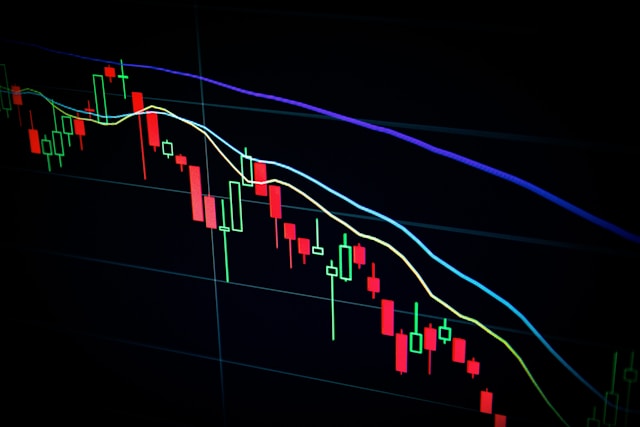India’s economic landscape is undergoing a significant transformation, and the stock market, often referred to as the “Share Bazaar,” is playing a pivotal role in this growth. With a burgeoning economy and a rapidly expanding middle class, India is attracting the attention of investors worldwide. This comprehensive guide serves as your gateway to understanding the intricacies of the Indian stock market, equipping you with the knowledge and resources to navigate this dynamic and rewarding marketplace.
Key Players and Regulatory Bodies:
Before diving into the nitty-gritty of investing, let’s establish the foundational elements of the Indian stock market. Two primary stock exchanges facilitate trading in India:
1. The Bombay Stock Exchange (BSE):
Established in 1875, the BSE boasts a rich history and is Asia’s oldest stock exchange. It offers a robust trading platform and several key indices, with the Sensex being the most widely recognized. The Sensex is a benchmark index that tracks the performance of the 30 largest and most actively traded companies listed on the BSE.
2. The National Stock Exchange of India (NSE):
Established in 1992, the NSE has emerged as a leading stock exchange in India, known for its technologically advanced trading platform. The NSE’s popularity index, the Nifty 50, tracks the performance of the 50 largest companies listed on the exchange. The Nifty 50 serves as a vital indicator of the overall health of the Indian stock market.
Ensuring fair play and protecting investors is the responsibility of the Securities and Exchange Board of India (SEBI). SEBI acts as the regulatory body overseeing the Indian stock market, establishing rules, regulations, and investor protection measures.
Another crucial element of the Indian stock market ecosystem is the concept of depositories. Gone are the days of physical share certificates. Depositories like NSDL (National Securities Depository Limited) and CDSL (Central Depository Services Limited) hold shares electronically in dematerialized form, enhancing security and streamlining the trading process.
Products and Participants, Investing in the Indian Market:
Now that you understand the key players, let’s explore the investment instruments available in the Indian market:
1. Equity Shares (Stocks):
When companies require capital for growth and expansion, they issue equity shares. By purchasing these shares, you become a part-owner of the company and are entitled to dividends, a portion of the company’s profits.
2. Derivatives:
While a detailed explanation of derivatives is beyond the scope of this guide, it’s important to be aware of their existence. Derivatives are financial contracts whose value is derived from underlying assets like stocks, currencies, or commodities. These instruments are used for various purposes, including hedging and speculation.
3. Mutual Funds:
For those seeking a more diversified and professionally managed approach to investing, mutual funds offer a compelling solution. Mutual funds pool money from multiple investors and invest it in a basket of securities, such as stocks and bonds. This diversification helps spread risk and potentially improve returns.
Companies looking to raise capital through an initial public offering (IPO) go public by issuing shares to the general public for the first time. Investing in IPOs can be a lucrative proposition, but it also carries inherent risks.
The Indian stock market thrives on the participation of various actors:
1. Stockbrokers:
Stockbrokers act as intermediaries between investors and the stock exchanges. They execute buy and sell orders on behalf of their clients and charge brokerage fees for their services. When selecting a stockbroker, consider factors like fees, online trading platforms, and customer service.
2. Institutional Investors:
Institutional investors like banks, insurance companies, and mutual funds play a significant role in the Indian stock market. Their sizable investments contribute to market liquidity and stability.
3. Retail Investors:
With the increasing accessibility of online trading platforms and growing financial literacy, retail investor participation in the Indian stock market is on the rise.
Entering the Market, Essential Steps for Beginners:
The Indian stock market offers exciting opportunities for investors, but it’s crucial to enter with a well-defined plan and a clear understanding of the process. Here’s a roadmap to guide you through the initial steps:
Selecting a Broker:
Choosing the right stockbroker is a vital decision. Consider the following factors:
a. Brokerage Fees:
Compare fees charged by different brokers for various transactions like buying, selling, and account maintenance. Discount brokers often offer lower fees, but their level of service might be different from traditional brokers.
b. Trading Platform:
Evaluate the user-friendliness and features offered by the broker’s online trading platform. Look for a platform that is easy to navigate, provides real-time market data, and allows you to place orders seamlessly.
c. Customer Service:
Having access to reliable customer support is essential, especially for new investors. Choose a broker with responsive and knowledgeable customer service representatives who can answer your questions and address any concerns.
2. Dematerialization Account:
Physical share certificates are a thing of the past. To hold shares electronically, you’ll need a dematerialization account with a depository participant (DP) like a bank or a broker. This account facilitates the electronic storage and transfer of your shares.
3. Trading Account:
Once you’ve chosen a broker and opened a dematerialization account, you’ll need a trading account. This account allows you to place buy and sell orders on the stock exchange through your broker’s platform.
4. Understanding Risks:
The stock market is inherently risky. Share prices can fluctuate significantly, and there’s always the possibility of losing some or all of your invested capital. Never invest more than you can afford to lose, and prioritize responsible investing practices.
Charting Your Course: Investment Strategies and Resources:
As a beginner, navigating the complexities of the Indian stock market can be daunting. Here are some basic investment strategies to consider:
a. Long-Term Investing:
Don’t be lured by the allure of quick riches. The Indian stock market offers excellent opportunities for long-term wealth creation. Focus on investing in fundamentally strong companies with a solid track record and growth potential.
b. Diversification:
Don’t put all your eggs in one basket. Spread your investments across different sectors and asset classes like stocks, bonds, and mutual funds. This diversification helps mitigate risk and provides a more balanced portfolio.
c. Regular Investment Plans (SIPs):
SIPs (Systematic Investment Plans) offer a disciplined approach to investing. By investing a fixed amount at regular intervals (monthly, quarterly), you benefit from rupee-cost averaging, which helps even out the impact of market fluctuations over time. SIPs are an excellent way to build wealth gradually and inculcate a habit of regular investing.
Learning Resources:
Equipping yourself with knowledge is crucial for success in the stock market. Here are some valuable resources to get you started:
a. SEBI and Stock Exchange Websites:
Both SEBI and the stock exchanges offer educational resources and information for new investors. These websites provide insights into the workings of the market, investment basics, and investor protection guidelines.
b. Financial News Platforms:
Stay informed about current market trends and company news by following reputable financial news platforms. These platforms offer a wealth of information, analysis, and expert opinions, but remember to conduct your own research before making investment decisions.
c. Investment Research:
Consider subscribing to research reports from established investment firms. These reports provide in-depth analysis of companies, industries, and market trends, offering valuable insights to guide your investment choices.
Sectoral Spotlight:
The Indian market boasts a diverse range of sectors, each with its unique growth potential and risk profile. Here’s a glimpse into some key sectors:
a. Information Technology (IT):
A perennial favorite, the Indian IT sector is a global leader. Consider factors like cloud computing, digital transformation, and e-commerce adoption when evaluating IT stocks.
Risk:
While resilient, the sector is susceptible to global economic slowdowns and currency fluctuations.
b. Financials:
Banks, insurance companies, and non-banking financial companies (NBFCs) form the backbone of the Indian financial sector. Analyze factors like loan growth, interest rates, and non-performing assets (NPAs) before investing.
Risk:
Regulatory changes, economic downturns, and rising NPAs can impact profitability.
c. Fast-Moving Consumer Goods (FMCG):
FMCG companies offer essential everyday products. Look for brands with strong distribution networks, brand loyalty, and rural market penetration.
Risk:
Inflationary pressures, rising input costs, and intense competition can affect margins.
d. Infrastructure:
India’s ongoing infrastructure development presents compelling investment opportunities. Focus on companies involved in roads, power, and renewable energy sectors.
Risk:
Project delays, regulatory hurdles, and execution challenges can impact timelines and returns.
Pharmaceuticals:
The Indian pharmaceutical industry is a global powerhouse. Consider factors like new drug launches, research and development (R&D) capabilities, and export potential.
Risk:
Regulatory scrutiny in key markets like the US and price control measures can affect profitability.
Intraday Trading and the Risk-Reward Equation:
This guide goes beyond the basics, exploring the world of intraday trading. Intraday trading involves buying and selling stocks within the same trading day, aiming to capitalize on short-term price movements. However, it carries significant risks:
a. Volatility:
Intraday trading thrives on market volatility, but it can also lead to amplified losses if the market moves against you.
b. Discipline:
Strict discipline and emotional control are crucial. Resist the urge to make impulsive decisions based on short-term fluctuations.
c. Time Commitment:
Intraday trading requires constant monitoring of market movements and quick decision-making. Ensure you have the time and resources to dedicate to this demanding activity.
Risk Management Strategies: Safeguarding Your Investments:
The Indian stock market offers immense potential, but it’s vital to manage risk effectively:
a. Diversification:
Spread your investments across different sectors and asset classes to mitigate risk from any single sector or company.
b. Stop-Loss Orders:
Utilize stop-loss orders to automatically exit positions when the stock price falls below a certain level, limiting potential losses.
c. Risk-Reward Ratio:
Always consider the potential reward against the potential risk before entering any trade. Aim for trades with a higher potential reward compared to the risk involved.
d. Invest What You Can Afford to Lose:
Never invest money you cannot afford to lose. The stock market is inherently volatile, and there’s always a possibility of losing some or all of your investment.
Conclusion:
The Indian stock market presents an exciting avenue for wealth creation. With a growing economy, a dynamic business landscape, and a rising middle class, India is poised for continued growth. This comprehensive guide has equipped you with the foundational knowledge to navigate the Indian Share Bazaar. Remember, investing is a marathon, not a sprint. Approach the market with a long-term perspective, prioritize responsible investing practices, and continuously educate yourself. By following these steps and harnessing the available resources, you can embark on a rewarding journey in the world of Indian equities.




